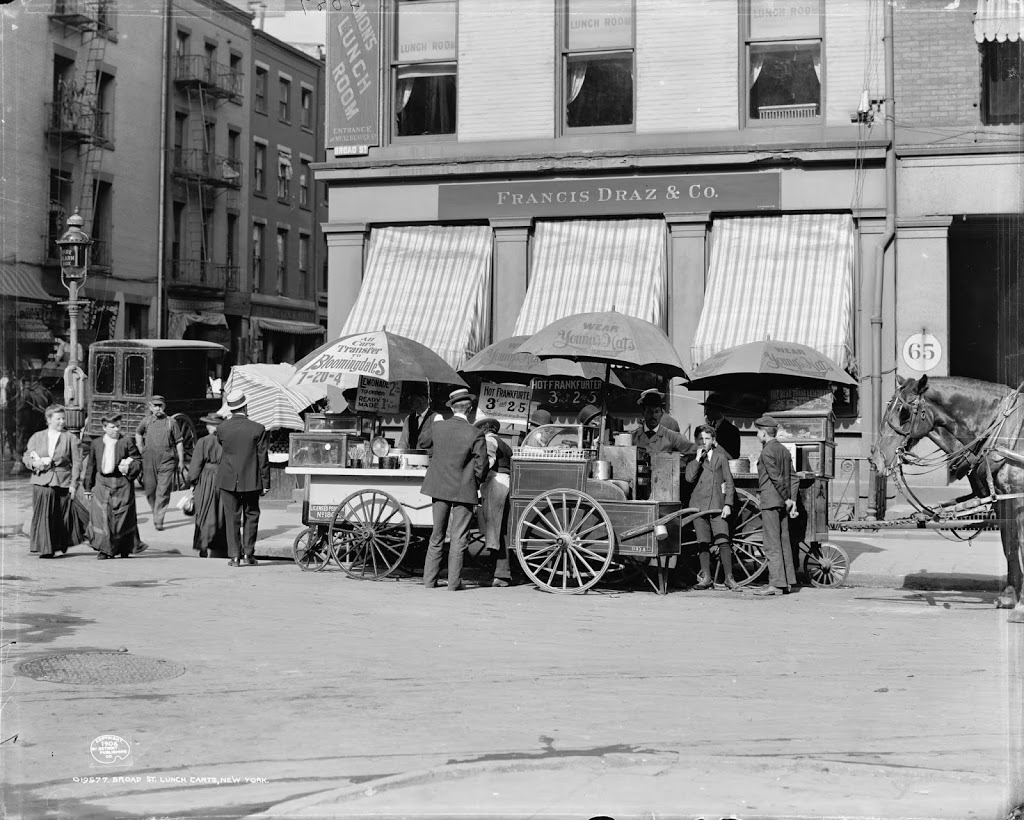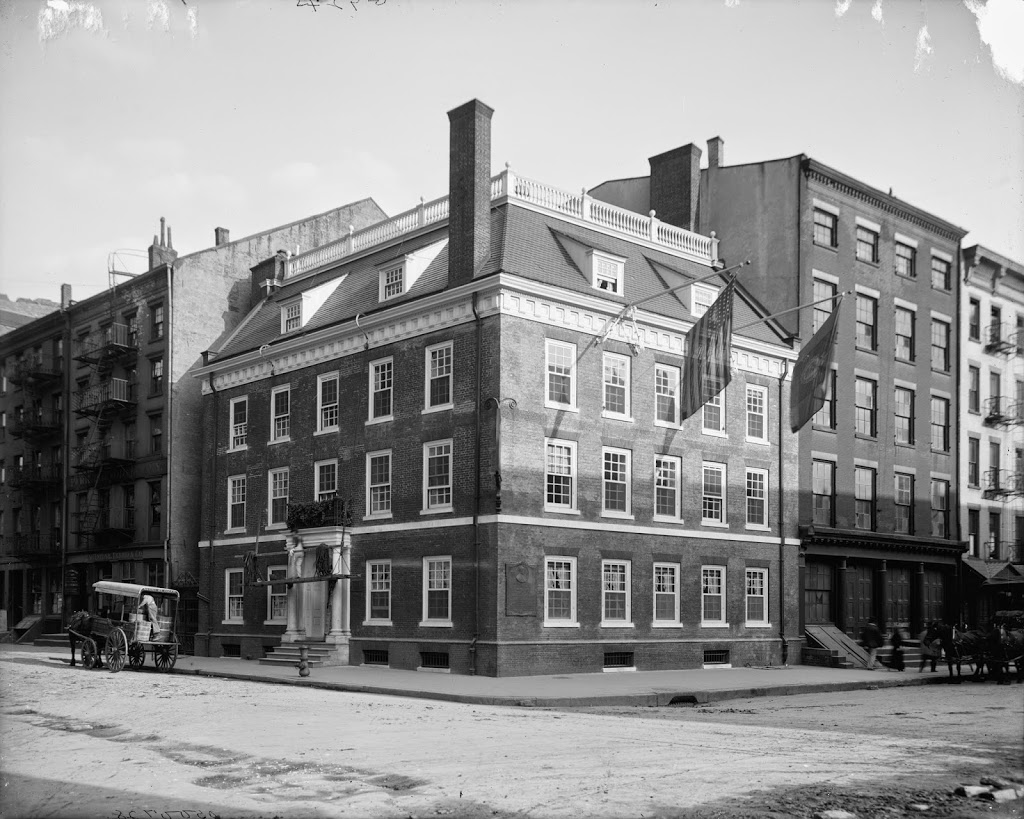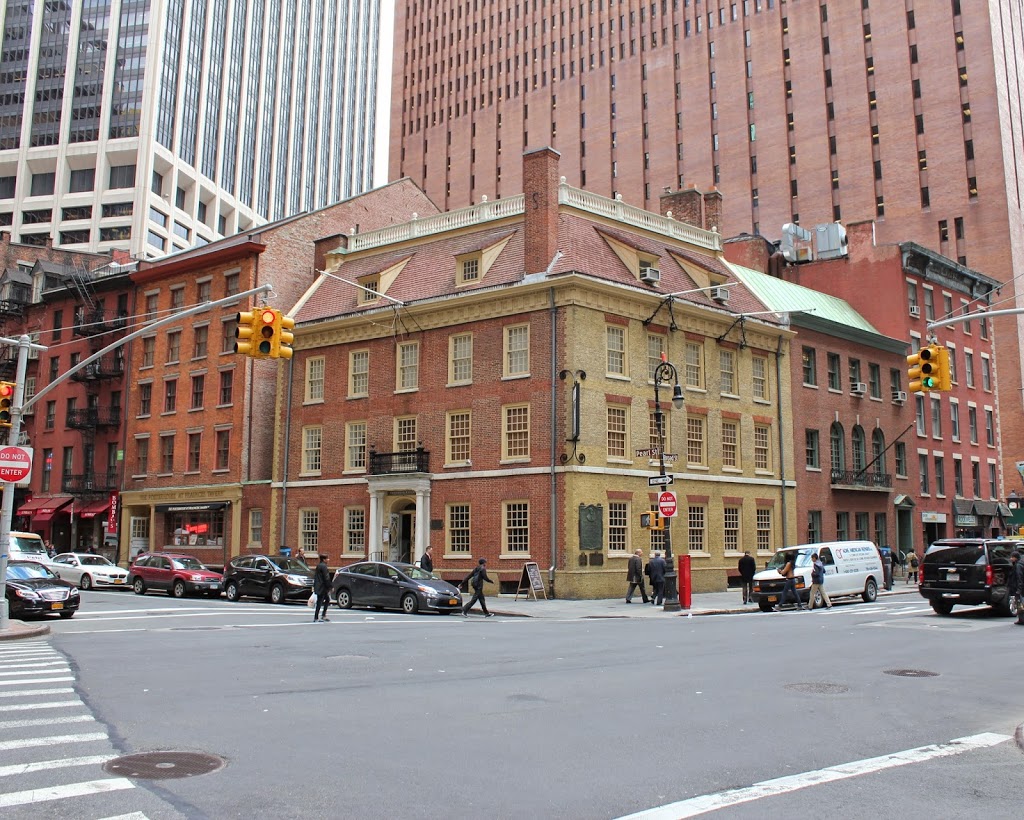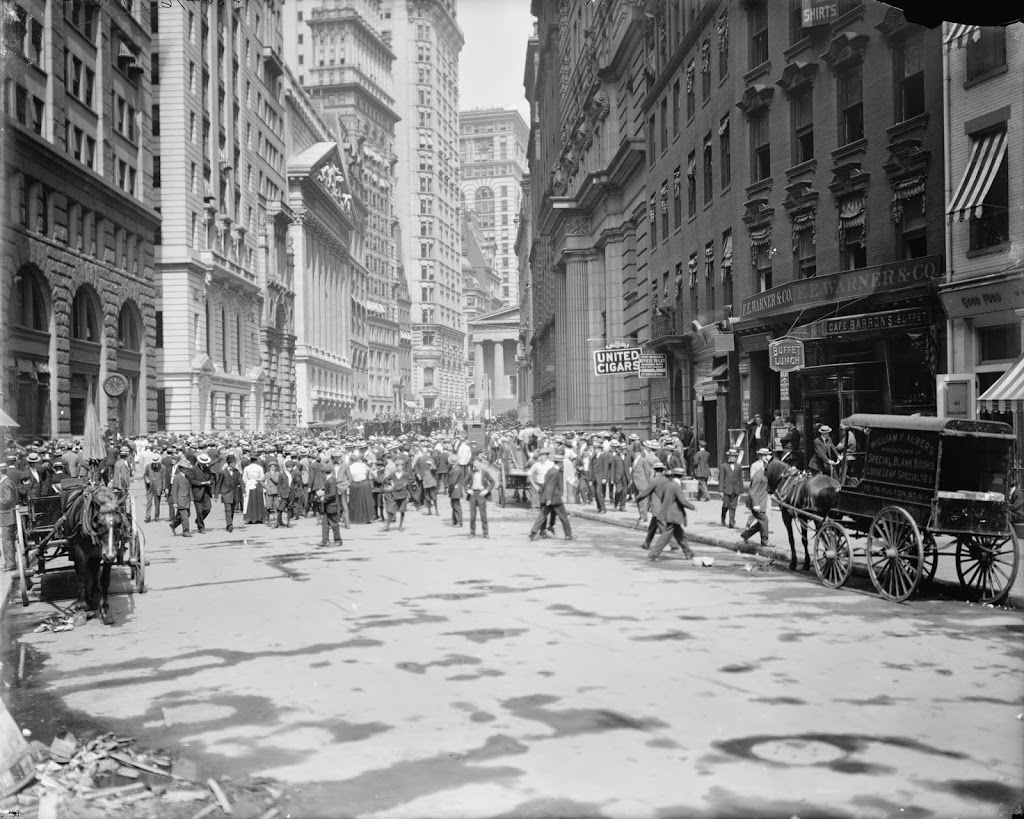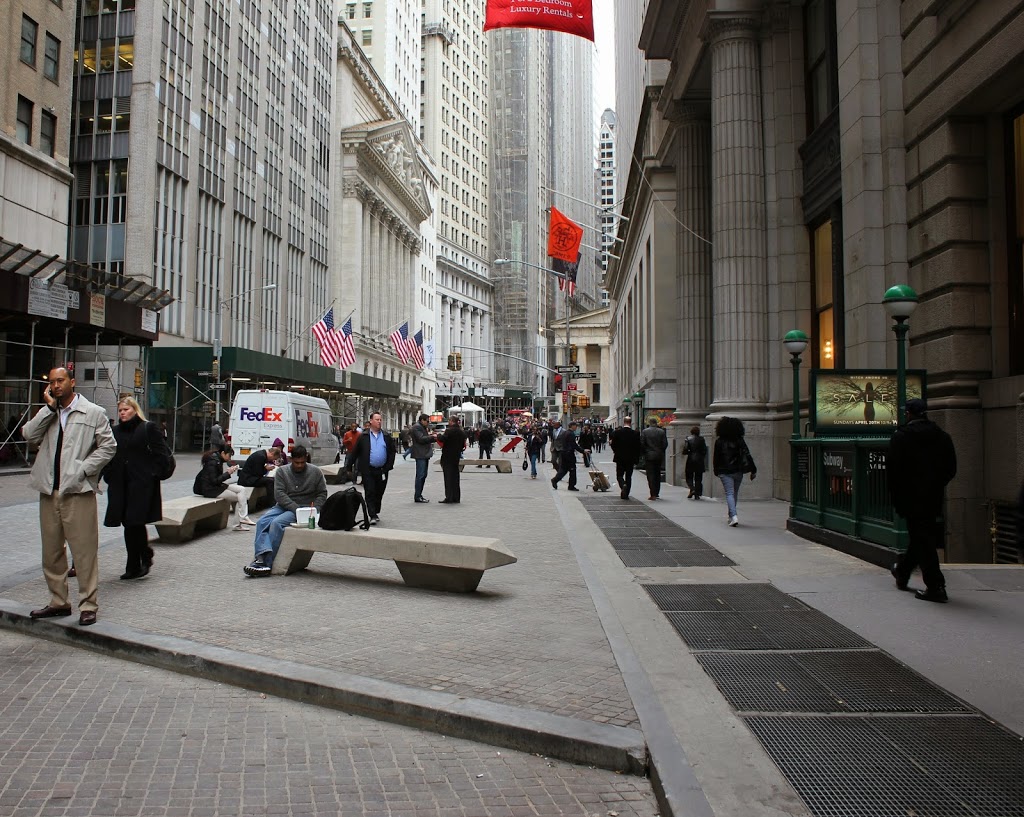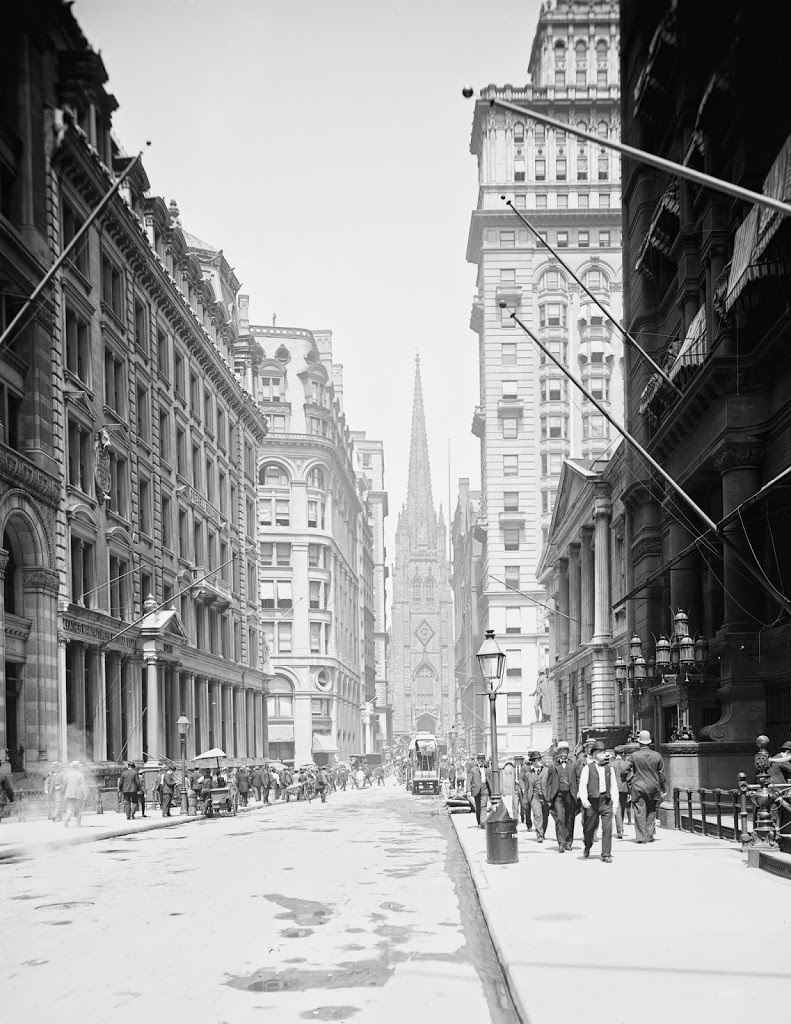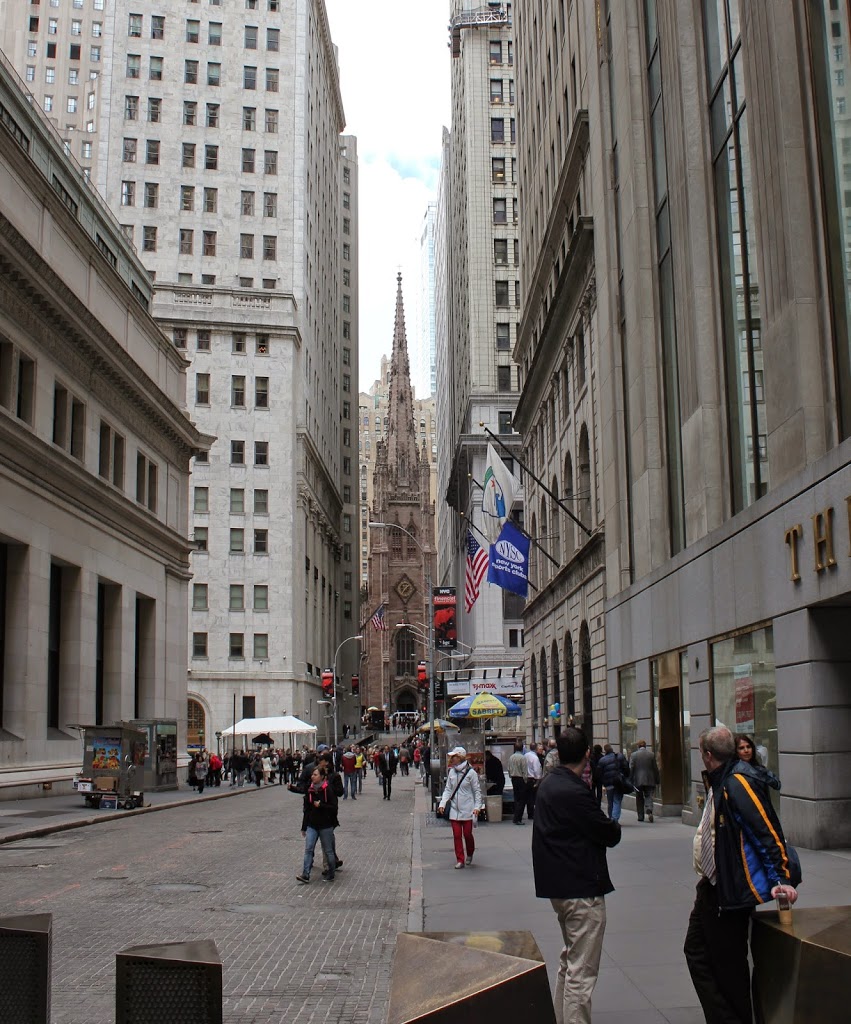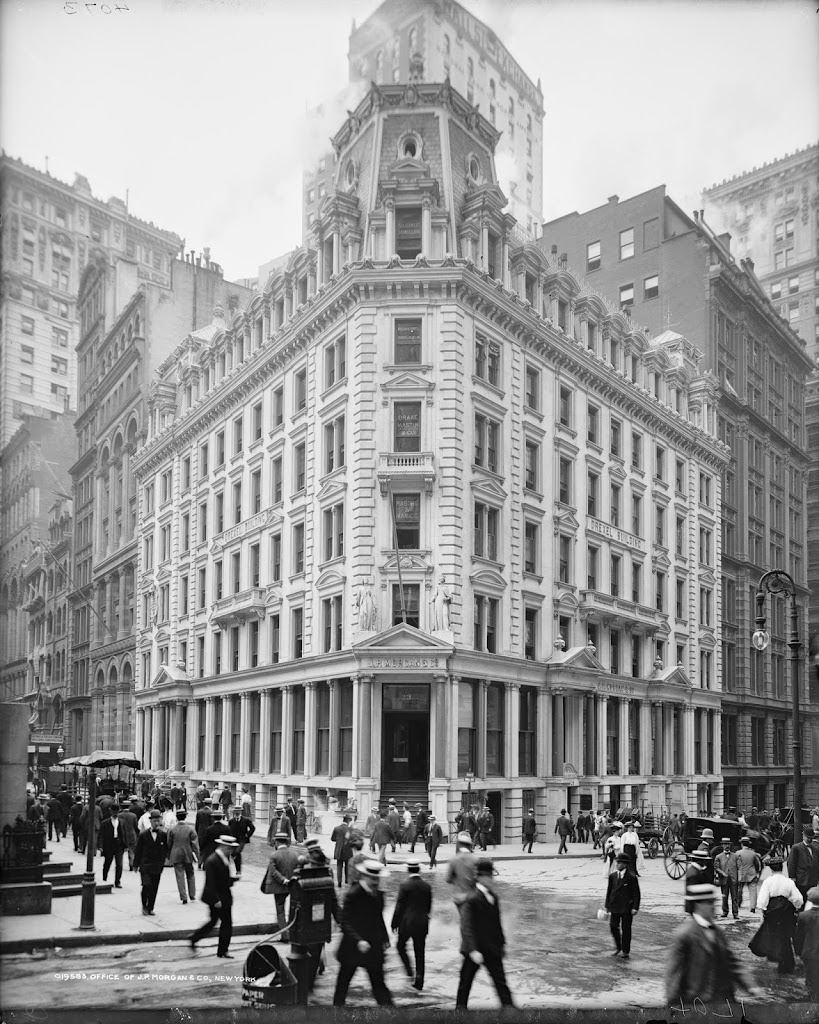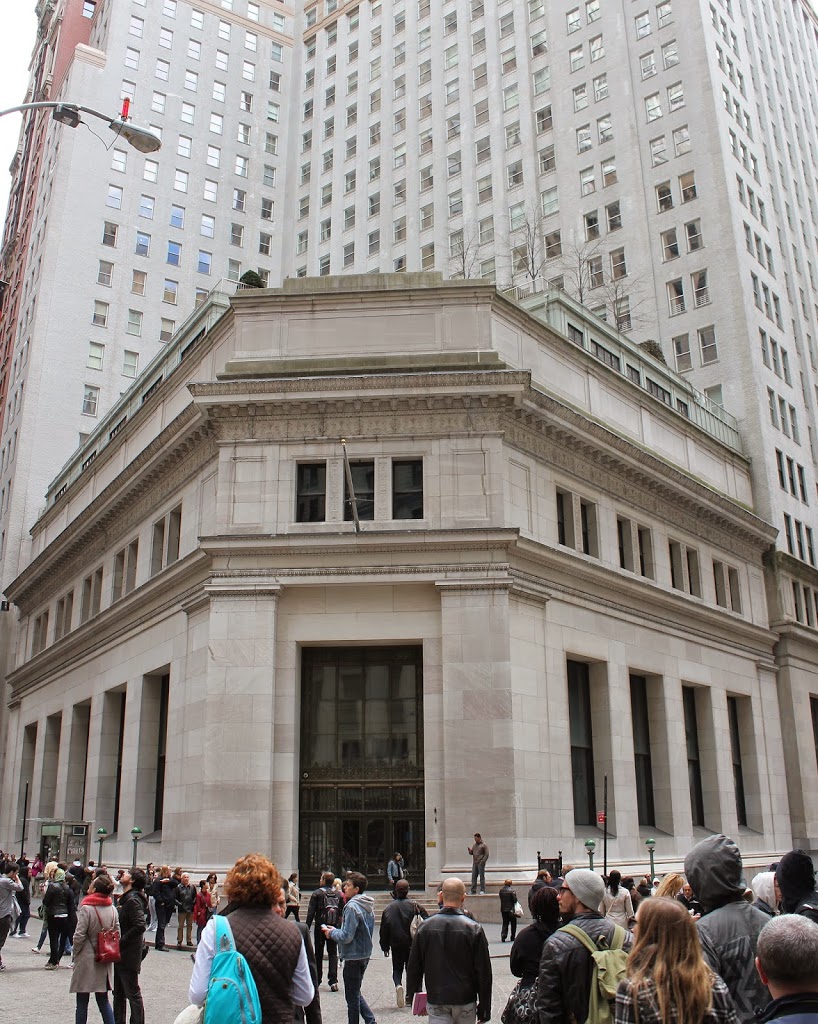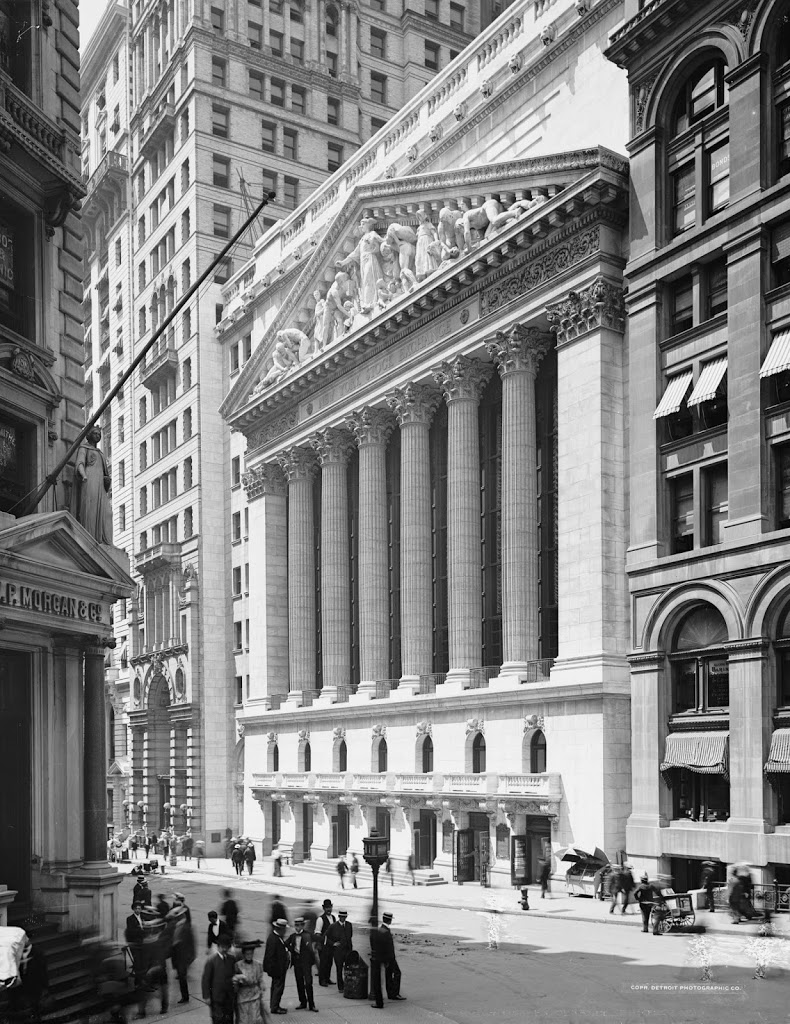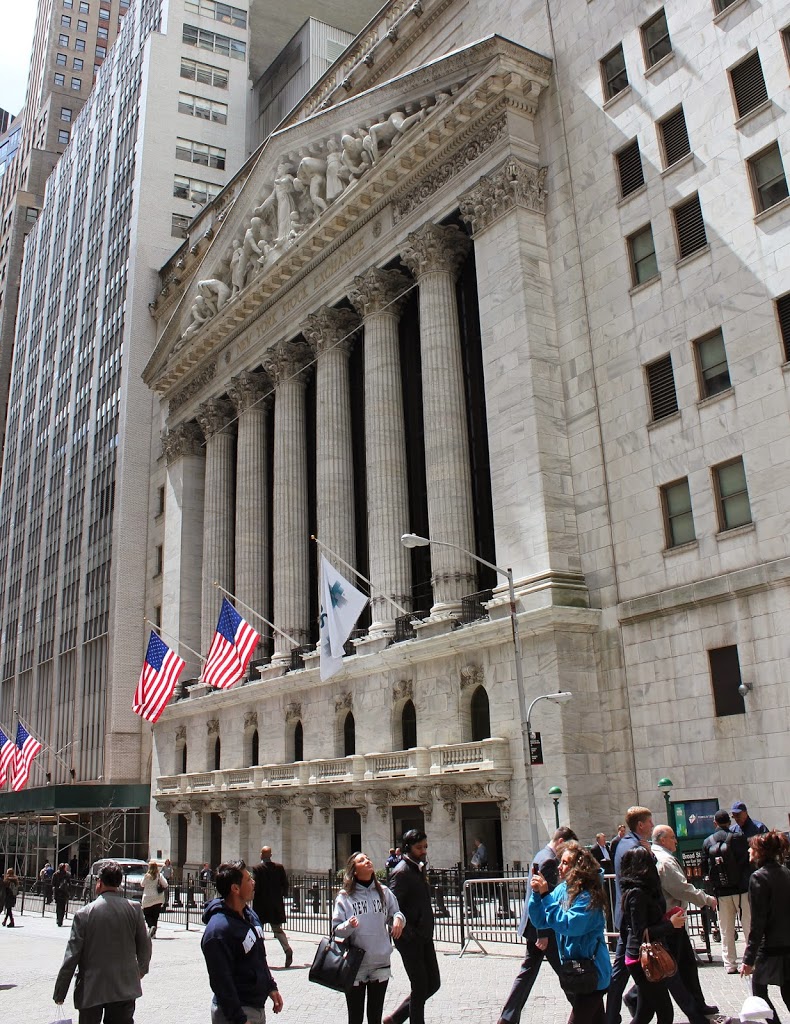Lunch carts at the corner of Broad Street and Beaver Street, in the Financial District of New York City, around 1906. Image courtesy of the Library of Congress, Detroit Publishing Company Collection.
The same street corner in 2014:
Absolutely nothing from the original photo still exists today. Well, I suppose the lunch carts might be hanging around somewhere in a museum or antique store, but nothing is still at the site today. Even the sellers and customers are long-dead. Francis Draz & Co., which sold wine, is gone, as is its building, and the site is now occupied by one of Manhattan’s ubiquitous Duane Read drugstores. Out front, workers in the financial district can still grab something to eat from a street vendor, except frozen yogurt has evidently replaced 3 cent hot frankfurters (or, 2 for 5 cents!) and one cent glasses of lemonade (or 2 cents if you want yours made to order). Above Francis Draz & Co., a “lunch room” evidently caters to those who have the luxury of sitting down for their lunch break. On a side note, several of the 1906 lunch carts are sponsored by “Young’s Hats,” which, according to one of the least reassuring advertising slogans of all time, are “now better made.”

